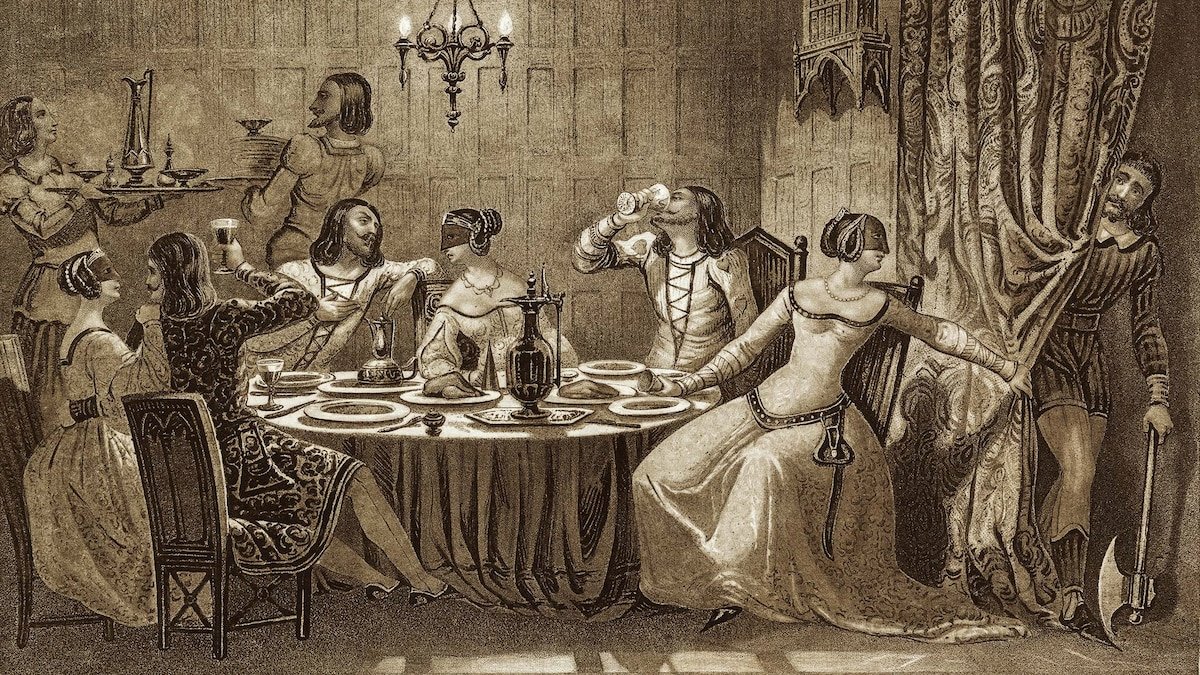The alleged affair that began a century-long battle
Spouse infidelity investigator:
“Heavy is the head that wears the crown,” wrote William Shakespeare. For 3 young women in the early 1300s, being the daughters-in-law of a king might per chance per chance furthermore very effectively be beautiful as burdensome, namely when the sovereign became the ruthless Philip IV of France.
Like many kings earlier than him, Philip IV became alive to about the ask of his succession. His dynasty, the Capets, had dominated France since the 900s, and to make certain its survival, Philip made strategic marriages for his formative years to stable alliances and heirs.
His three sons married French noblewomen, and his daughter, Isabella, wed King Edward II of England. But all his plans would reach undone in 1314, when his formative years and their spouses were engulfed by the Nesle Tower affair. The scandal no longer ideal resulted in torture, imprisonment, and the likely waste of in truth one of the princesses; it also resulted in a succession crisis in France that sparked the ruinous Hundred Years’ Struggle.
(How Joan of Arc turned the tide in the Hundred Years’ Struggle.)
Spouse infidelity investigator: Illicit affairs
The opposite halves of all three of King Philip’s adult sons hailed from the neighboring instruct of Burgundy. Louis (the future Louis X) married Margaret, daughter of the Duke of Burgundy. Philip (the future Philip V) married Joan, daughter of the Rely of Burgundy. Lastly, Charles, (the future Charles IV) married Joan’s sister, Blanche of Burgundy.
Anxious to stable the Capetian dynasty, Philip IV (at center in a 14th-century dinky) married his sons to Burgundian noblewomen.
Oronoz/Album
Finest in truth such a marriages is recorded as being overjoyed. Even by the necessities of dynastic marriage, Margaret’s union with Louis became cool. Charles became overbearing with Blanche. Finest Joan perceived to possess been fortunately married to Philip, a bond that could later spare her from the depressing fates of her sisters-in-law.
The scandal began in 1313 when Isabella, King Philip’s daughter, visited Paris alongside with her toddler son, the future Edward III of England. Several chronicles picture a puppet present off at which Isabella gave embroidered silk purses to her three sisters-in-law, Margaret, Blanche, and Joan.
Fuel their curiosity with your gift
On a later consult with home, Isabella seen that two knights accompanying her sisters-in-law—brothers Philippe and Gautier d’Aunay—were carrying those proficient purses on their belts. It is alleged Isabella seen these purses as a impress of a bootleg liaison between the knights and her sisters-in-law, and he or she alerted her father in 1314.
On their very have, the purses were no longer going to possess been ample proof of adultery. Although for the length of the Heart Ages, when women gave such items to knights as favors, it became a custom customarily viewed as a indicate of affection. But the king would want stronger proof than that.
Philip IV ordered males to explore on his daughters-in-law and the 2 knights. Soon ample, he had experiences that the three women were meeting with the 2 males at the Tour de Nesle, a guard tower on the Seine River in central Paris. All three princesses were viewed coming and going at the tower, however ideal two of them—Margaret and Blanche—were having affairs with the knights.
Château Gaillard in Normandy, France, is the fortress by which Margaret and Blanche of Burgundy were incarcerated, and the set Margaret died in 1315, per chance as a results of waste.
Bruno Morandi/GTRES
The two d’Aunay brothers were arrested and imprisoned. Below torture, they confessed to the affair on April 19, 1314. Margaret and Blanche were imprisoned in the Château Gaillard fortress in Normandy. Although Joan became no longer fervent sexually with the knights, she became accused of being an confederate and incarcerated at Dourdan, shut to Paris. On the opposite hand, she retained the toughen of her husband, who never disowned her.
(Internal the decadent like affair of Cleopatra and Place Antony.)
Spouse infidelity investigator: Weighing the information
Most historians think that the affairs did happen, yet there might be difference among students. A mammoth resolution of main sources documented the Nesle Tower affair. Among them are the Chronicles of the Rely of Flanders; the Fable of the Kings of France by Guillaume de Nangis, a monk shut to Paris; and the Scalacronica, written by an English knight. These contradict every other by formula of chronology, so it is difficult to make certain of what occasions took instruct when. Faulty-referencing these chronicles with royal household accounts, nevertheless, items a rough time line.
One sticking point for hundreds of historians is that the d’Aunays’ resistance to torture lasted for days, leading some to mediate they were falsely accused and were attempting to preserve up their innocence. The Chronicles of the Rely of Flanders put forward an arresting conspiracy thought: The princesses and the knights were harmless and framed by Philip IV’s predominant minister, Enguerrand de Marigny. He became later accused of sorcery to misfortune the king and hung. Most historians, nevertheless, accept that Margaret and Blanche had dedicated adultery.
(Scandal and feuds are why that you just could furthermore possess never heard of these 7 geniuses.)
Spouse infidelity investigator: Princesses and queens
After being condemned by the king in a secret trial, the knights were done. Accounts vary on the true facts of their deaths, however all are very gruesome. Some dispute they were skinned alive and that their “manly formula” were cleave off. They were decapitated and their remains were publicly displayed.
Spouse infidelity investigator: You Can also Also Like
The women’s fates were no longer as violent because the knights’. Margaret and Blanche were tried and discovered guilty of adultery. Their heads were shaved and both were sentenced to existence in underground cells at Château Gaillard. Which capacity of Joan knew about the affairs, she became punished with apartment arrest at the Château de Dourdan.
Margaret remained in penal complex, even when she turned the queen of France. Philip IV died in November 1314, and Margaret’s husband succeeded him as Louis X. But by April 1315, she became pointless, and Louis remarried beautiful days later, increasing suspicion that Margaret had been murdered—presumably strangled.
After eight years at Château Gaillard, Blanche became launched. Her marriage to Charles remained intact unless Can also 1322, when the pope granted an annulment. Her last fate is unknown. Many think she spent her last years at a nunnery in the Abbey of Maubuisson, the set she died around 1326.
Finest Joan escaped long-term punishment. Philip stood by her and secured her originate. When he began his reign as Philip V in 1317, Joan turned queen. Her husband died in 1322, and he or she outlived him by eight years, demise in 1330. But the shadow of the Nesle Tower affair fell over Philip V too, and the Capet line edged nearer to extinction.
(Be pleased ‘Succession’? These 5 locations repeat experiences of historic family feuds.)
Head shaving, depicted right here among monks in a 13th-century dinky, became a odd punishment for adultery love the Nesle affair.
Bridgeman/ACI
All of Philip IV’s machinations to stable his dynasty lay in tatters. When Louis X died in 1316, his toddler successor, John, lived ideal five days.
Philip, Joan’s husband, became at final crowned as Philip V, however ideal after usurping his niece. In expose to account for seizing the throne from her, Philip invoked the damaged-down Frankish Salic Regulation that barred a woman from the throne. In an ironic twist, Joan and Philip V ideal had daughters, so adherence to Salic Regulation intended that Philip V’s daughters needed to be handed over for his younger brother, Charles, who took the throne in 1322.
After Charles annulled his marriage to Blanche, he did remarry however failed to compose a son. When Charles IV died in 1328, the order male line of the Capetian dynasty became extinguished with him.
Charles IV’s cousin acceded to the French throne, however this declare became contested by none as antagonistic to Charles’s English nephew and son of his sister, Isabella, the predominant informant of the affair. The competing claims of her son Edward III of England and her cousin Philip of Valois resulted in the Hundred Years’ Struggle, whose destruction became compounded by the Black Loss of life in the 1340s. Historian Barbara Tuchman famously known as the era “the calamitous 14th century,” due in no tiny phase to the occasions of the Nesle Tower affair.





